- News
- Reviews
- Bikes
- Accessories
- Accessories - misc
- Computer mounts
- Bags
- Bar ends
- Bike bags & cases
- Bottle cages
- Bottles
- Cameras
- Car racks
- Child seats
- Computers
- Glasses
- GPS units
- Helmets
- Lights - front
- Lights - rear
- Lights - sets
- Locks
- Mirrors
- Mudguards
- Racks
- Pumps & CO2 inflators
- Puncture kits
- Reflectives
- Smart watches
- Stands and racks
- Trailers
- Clothing
- Components
- Bar tape & grips
- Bottom brackets
- Brake & gear cables
- Brake & STI levers
- Brake pads & spares
- Brakes
- Cassettes & freewheels
- Chains
- Chainsets & chainrings
- Derailleurs - front
- Derailleurs - rear
- Forks
- Gear levers & shifters
- Groupsets
- Handlebars & extensions
- Headsets
- Hubs
- Inner tubes
- Pedals
- Quick releases & skewers
- Saddles
- Seatposts
- Stems
- Wheels
- Tyres
- Health, fitness and nutrition
- Tools and workshop
- Miscellaneous
- Tubeless valves
- Buyers Guides
- Features
- Forum
- Recommends
- Podcast
review
£2,200.00
VERDICT:
A hugely fun bike to thrash about on in the woods, but it doesn't offer the greatest value in the current marketplace
Weight:
9,180g
Contact:
At road.cc every product is thoroughly tested for as long as it takes to get a proper insight into how well it works. Our reviewers are experienced cyclists that we trust to be objective. While we strive to ensure that opinions expressed are backed up by facts, reviews are by their nature an informed opinion, not a definitive verdict. We don't intentionally try to break anything (except locks) but we do try to look for weak points in any design. The overall score is not just an average of the other scores: it reflects both a product's function and value – with value determined by how a product compares with items of similar spec, quality, and price.
What the road.cc scores meanGood scores are more common than bad, because fortunately good products are more common than bad.
- Exceptional
- Excellent
- Very Good
- Good
- Quite good
- Average
- Not so good
- Poor
- Bad
- Appalling
Although it has been superseded by the Boone as Trek's top-of-the-range cyclo-crosser, the Crockett boasts plenty of racing pedigree itself, having been raced to World Cup wins for many years by none other than US national champion Katie Compton.
Naturally, having been developed with the racetrack in mind, the Crockett feels taut and direct, but it's also a bike capable of handling more adventurous riding, where the terrain provides the main challenge rather than the lactic acid coming out of your eyeballs.
Find your nearest dealer here
Buy this online here
Frame and fork
The whole Crockett range is based on the same frame, constructed from what Trek calls 'Alpha Aluminium' alloy. Up front, you've got a beefy 'E2' (aka 1 1/8-1 1/2in tapered) head tube, which houses a full carbon fork in the case of the top-end Crockett 9 tested. A suitably oversize down tube connects this beefy front end to an 86.5mm wide press-fit bottom bracket, which, over the month-long test period, has remained mercifully creak free. The wide top tube is flattened on the underside for improved comfort or, more realistically, lessened discomfort, and flows into a pair of slightly bowed seatstays. These are joined by a seatstay bridge despite the disc brakes, but mud clearance around the rear end is still pretty good and certainly on par with most other CX bikes.
Geometry-wise, things are fairly standard as well. A reach of 391mm for the 58cm size tested won't cause any surprises, but the 597mm stack results in a front end that is a touch taller than what you might expect from a pure racer. Nevertheless, I found this added front end height to be a positive when tackling steep and technical descents, when you could opt for the added security of being in the drops without feeling like you were going to somersault over the handlebar.
The longer-than-usual 1028mm wheelbase also helps keep things rubber side down when things get rough, but despite this increased stability on the faster downhills, the 66mm of trail – how far behind the steering axis the tyre's contact patch is – still managed to keep the handling snappy at lower speeds, enabling the Crockett to get round greasy u-turns with ease.
Looking at the Crockett from a distance, there's nothing that really jumps out at you as being unique or different. Look a little closer, though, and you'll see that it benefits from some small but clever touches that can also be found on many of Trek's other bikes.
For example, you've got some nifty threaded mudguard mounts that can take proper metal-stayed guards with the addition of an adapter, but are nearly invisible the rest of the time. The Crockett's internal cable routing is designed to provide the straightest cable runs possible for improved shift performance, and replacing cables isn't the hassle it can be with other internal systems. Funnily enough, the Crockett includes routing for five cables/hydraulic lines, though I never really figured out why. The integrated chain catcher is another neat feature that doesn't scream 'look at me' but is very functional and could potentially save you a race.
Equipment
Disc brakes on cyclo-cross bikes are hardly anything new in 2015, but this is the first year we've really seen hydraulic brakes available on bikes that most of us can actually afford. The Crockett 9 comes equipped with Shimano's excellent RS685 brakes on 160mm rotors, which provide truly game changing levels of power and modulation compared with cable-actuated discs and cantilevers. It takes a little while to get used to the feel (those used to Shimano's mountain bike offerings will feel right at home), but after a couple of rides you soon find yourself adapting to being able to brake later and with more confidence.
Speccing disc brakes is one thing, but designing the frame and fork to be able to handle the different forces is quite another. This is where the Crockett's stout front end and oversized fork really come into their own – there's no hint of twist or juddering when braking hard over rough ground.
Trek has used a 15mm thru-axle for the front end, which no doubt stiffens things up considerably while also ensuring that the brake pads remain correctly aligned when removing and replacing the front wheel.
Disappointingly, a standard 135 x 9mm quick release is still used for the back end, when most of the industry seems to be moving in the direction of 12mm thru-axles and 142mm hub spacing. Granted, the increase in stiffness from a thru-axle is less noticeable on the rear wheel, but in terms of future-proofing and retaining compatibility with other wheelsets, it's a missed opportunity.
The Shimano Ultegra STI levers are slightly taller in order to house the master hydraulic cylinder, but they are still slimmer than the old 10-speed variety, and I find the extra on top actually provides a little added security when you hit some rough stuff while on the hoods.
The rest of the drivetrain is handled by Ultegra, save 105 substitutions for the chain and cassette, and an FSA Energy chainset with CX-specific 46/36t rings. There's really not much more to say about Ultegra – it simply works, combining a near effortless shifting feel with great accuracy. Given the asking price, though, you'd really expect a full Ultegra groupset for your money.
As usual on a Trek, the finishing kit is provided by Bontrager. As the 9 sits at the top of the Crockett range, it features some slightly snazzier and up-market items. The carbon seatpost looks great and the saddle clamp is very easy to use and adjust to achieve the correct angle and setback. The Race Lite bar is compact in shape, providing a nice flat transition between the shifter hood and bar, and also benefits from foam Iso-zone inserts on the tops, which add some vibration damping.
Rounding out the spec is a set of Bontrager Affinity Comp tubeless-ready wheels, shod with 32mm Bontrager CX3 Team Issue tyres (very similar in tread pattern and depth to Schwalbe's popular Racing Ralph). The Comps are a little on the heavy side and do negatively affect the Crockett's ability to accelerate out of low-speed corners, the sort usually littering a cyclo-cross course. Sure, any serious racer will be buying a set of race-day-specific wheels, but given the Crockett 9's asking price some racier wheels such as the next level up Elites would have been welcome.
The wheels can be converted to tubeless using a specific rim strip and valve. Unfortunately, I wasn't able to test out the tubeless capabilities during the test period, but previous experience with Bontrager mountain bike tubeless wheels have shown it to be a system that works and can be easily set up.
The ride
Out on the trails, the Crockett feels surefooted, inspiring confidence that it can handle anything you could throw at it. Undoubtedly, a lot of credit for this has to go to the brakes, which can really transform a CX bike from something capable of handling grassy fields into a machine you could take down your local mountain bike trail. Powerful brakes require a strong frame to handle the forces and the Crockett is more than up to the challenge – the front end is particularly impressive in its ability to hold a line no matter how hard you push it on rough terrain.
>> Check out our guide to buying a cyclo-cross bike here
The direct handling is great on the race course too, providing plenty of feedback on the conditions under tyre so you can make those micro-adjusts needed to stay rubber side down and moving forward. The stiffness comes at a price, though, as despite the Isospeed fork – designed to provide some degree of comfort up front – it doesn't really bear out in practice. If more cushioning is required, you'll need to let a few psi out of your tyres.
The stiff frame might lead you to assume the Crockett will jump forwards at any hint of power through the pedals, but unfortunately the somewhat porky 9.2kg mass dampens its enthusiasm to do so. The extra weight can be felt not only when accelerating from low-speed corners, but also when lifting and shouldering the bike on stairs and run-ups. To some extent, this is an inevitable consequence of disc brakes, which are heavier in themselves and also require a beefier frame, but the Affinity Comp wheels must also take a share of the blame.
There's no doubt the Crockett 9 is still well capable of mixing it between the tape, but the eagerness and nimbleness of racier – and more expensive, probably – bikes just isn't there.
Summary
Although the Crockett 9 doesn't look the most exciting on the outside, it's capable of tackling terrain that will have adrenaline pumping through your ears. The combination of Shimano's excellent hydraulic brakes and a frame that simply will not bend results in a bike with point-and-shoot handling that's only limited by the human on board.
However, at £2200 it's at the top end of what you can expect to pay for an aluminium-framed bike these days, especially considering that there are areas, such as the wheels, where the spec could be improved.
Verdict
A hugely fun bike to thrash about on in the woods, but it doesn't offer the greatest value in the current marketplace
road.cc test report
Make and model: Trek Crockett 9 Disc
Size tested: 58cm
About the bike
State the frame and fork material and method of construction. List the components used to build up the bike.
Colors
Matte Charcoal
Frame
200 Series Alpha Aluminum, E2 tapered head tube, BB86.5, internal control routing, disc brake balanced post mount, 3S chain keeper, hidden fender mounts
Fork
Trek IsoSpeed Cross carbon disc, carbon E2 steerer,15mm thru-axle
Sizes
50, 52, 54, 56, 58, 61cm
Wheels
Bontrager Affinity Comp Tubeless Ready, 15mm front
Tires
Bontrager CX3 Team Issue, aramid bead, 120tpi, 700x32c
Shifters
Shimano RS685 hydraulic, 11 speed
Front derailleur
Shimano Ultegra
Rear derailleur
Shimano Ultegra
Crank
FSA Energy Cross, 46/36
Cassette
Shimano 105, 11-28, 11 speed
Chain
Shimano 105
Saddle
Bontrager Paradigm R, hollow chromoly rails
Seatpost
Bontrager carbon, 2-bolt head, 27.2mm, 8mm offset
Handlebar
Bontrager Race Lite IsoZone, VR-CF, 31.8mm
Stem
Bontrager Elite, 31.8mm, 7 degree, w/Blendr computer & light mounts
Headset
FSA Integrated, sealed cartridge bearings, 1-1/8" top, 1.5" bottom
Brakeset
Shimano RS685 hydraulic disc, 160mm rotors
Bar Tape
Bontrager gel cork tape
Tell us what the bike is for, and who it's aimed at. What do the manufacturers say about it? How does that compare to your own feelings about the bike?
The Crockett is a cyclo-cross race bike, "built to race and hard wired for victory". Although it can hold its own on the race course, it truly shines when tackling difficult off-road terrain, and would suit someone looking for a bike that could take them anywhere.
Frame and fork
Overall rating for frame and fork
8/10
Tell us about the build quality and finish of the frame and fork?
There's no fancy tube profiling to be seen, but everything is put together well and it adds up to a smart looking bike that also feels built to last.
Tell us about the materials used in the frame and fork?
Aluminium frame, full carbon fork.
Tell us about the geometry of the frame and fork?
Very standard 'cross bike geometry, though a little taller than some true race-focused bikes out there. The wheelbase is also a touch longer for a given size, which adds a bit of stability when handling rougher terrain at higher speeds.
How was the bike in terms of height and reach? How did it compare to other bikes of the same stated size?
For the 58cm size tested, reach was 391mm and stack was 597mm. This results in a bike that is middle of the road in terms of length, but around 20mm taller than other race-orientated CX bikes.
Riding the bike
Was the bike comfortable to ride? Tell us how you felt about the ride quality.
The frame's stiffness is uncompromising and negatively impacts comfort, which isn't necessarily a top priority for a CX bike. Instead, tyre pressure is key to providing a little bit of cushioning against impacts. Summing the ride quality in one word, the Crockett feels "direct".
Did the bike feel stiff in the right places? Did any part of the bike feel too stiff or too flexible?
The front end is noticeably stiff, resulting in precise handling and a sense of control, even when braking hard over rough ground.
How did the bike transfer power? Did it feel efficient?
The Crockett's frame is easily capable of handling anything I could throw at it, from standing starts to town sign sprints. There is no chainrub or other indications of flex to speak of.
Was there any toe-clip overlap with the front wheel? If so, was it a problem?
Slight toe overlap, but never an issue when riding. Bear in mind that I have size 46 shoes with the cleats pushed all the way back, so I suspect this won't be an issue for most, save perhaps in the very smallest sizes.
How would you describe the steering? Was it lively, neutral or unresponsive? Neutral
Tell us some more about the handling. How did the bike feel overall? Did it do particular things well or badly?
The Crockett feels great when the going gets rough and the speeds increase as it provides a very stable and confidence-inspiring platform. At lower speeds, it definitely lost some agility, but overall Trek has got the balance pretty well sorted.
Which components had the most effect (good or bad) on the bike's comfort? would you recommend any changes?
Though the Crockett boasts a comfort-enhancing Isospeed fork and handlebar gel, tyre pressure in the surprisingly supple CX3 Team tyres is still the key to providing comfort.
Which components had the most effect (good or bad) on the bike's stiffness? would you recommend any changes?
The fork with its 15mm thru-axle is very impressive in its tracking ability and stiffness under braking.
Which components had the most effect (good or bad) on the bike's efficiency? would you recommend any changes?
The overall frame feels efficient once the bike is up to speed, but the 9.2kg overall weight does take some effort to get it there.
Rate the bike for efficiency of power transfer:
8/10
Solid when out of the saddle.
Rate the bike for acceleration:
6/10
The Crockett felt a little sluggish coming out of low-speed corners.
Rate the bike for sprinting:
7/10
Rate the bike for high speed stability:
9/10
It provides great stability over rough terrain when pushing hard.
Rate the bike for cruising speed stability:
7/10
Rate the bike for low speed stability:
6/10
Ideally, a CX bike would have a little low-speed stability to enable it to nip around tight CX courses, but the Crockett feels optimised for faster speeds.
Rate the bike for flat cornering:
8/10
Long wheelbase and direct feedback through the handlebar means you can push the Crockett to its limits.
Rate the bike for cornering on descents:
8/10
Long wheelbase inspires confidence on rough, off-road descents.
Rate the bike for climbing:
7/10
It's stiff, but doesn't exactly jump forwards too readily under power.
The drivetrain
Rate the drivetrain for performance:
9/10
No issues at all. The latest Shimano groupsets are simply brilliant.
Rate the drivetrain for durability:
9/10
Time and numerous crashes have shown that Ultegra is built to last.
Rate the drivetrain for weight:
6/10
A few non-Ultegra substitutions add some weight.
Rate the drivetrain for value:
5/10
As the Crockett is one of the more expensive aluminium framed bikes around, you'd expect a full Ultegra groupset for your money.
Tell us some more about the drivetrain. Anything you particularly did or didn't like? Any components which didn't work well together?
Despite not being Shimano Ultegra, the FSA Energy chainset with 46/36 chainrings reflects the Crockett's true race background. No compact cranks here to suit the commuters.
Wheels and tyres
Rate the wheels and tyres for performance:
7/10
Reliable and stiff enough, but they feel a bit sluggish when accelerating hard.
Rate the wheels and tyres for durability:
8/10
No issues.
Rate the wheels and tyres for weight:
7/10
Not super-heavy, but considering the quality of the rest of the components, the wheelset does feel under-specced.
Rate the wheels and tyres for comfort:
8/10
The Bontrager CX3 tyres are nicely supple and provide decent grip for a wide range of conditions.
Rate the wheels and tyres for value:
5/10
Given the price, I can't help thinking that a higher end wheelset should have been specced.
Controls
Rate the controls for performance:
8/10
The RS685 brakes are the standout components, providing powerful, easy to control braking no matter the conditions. Finishing kit is all Bontrager, but it's quality stuff despite not having the same appeal as perhaps Ritchey or 3T.
Rate the controls for durability:
7/10
Rate the controls for weight:
6/10
Disc brakes add some weight, both at the component level and due to having to beef the frame up to handle the forces.
Rate the controls for comfort:
7/10
Gel pads in the bar are a nod to comfort, but overall there's not a lot of cushion between bike and rider.
Rate the controls for value:
6/10
As with the wheels, I think a £2K-plus bike with an aluminium frame should come with plenty of carbon bits to make up for it.
Anything else you want to say about the componentry? Comment on any other components (good or bad)
The hydraulic brakes are the standout item and really transform the bike into something on which you could tackle any terrain while still feeling in control.
Your summary
Did you enjoy riding the bike? Yes
Would you consider buying the bike? If the price had been discounted.
Would you recommend the bike to a friend? Yes
Rate the bike overall for performance:
8/10
Rate the bike overall for value:
6/10
Use this box to explain your score
The Crockett was great fun to ride, handling everything I could throw at it, and if I was marking it on performance alone it would get a much higher score, but as an overall package it is expensive for an aluminium-framed bike, and some of the components fall short of what I would expect for the money.
About the tester
Age: 24 Height: 190cm Weight: 69kg
I usually ride: Giant TCR My best bike is:
I've been riding for: 5-10 years I ride: Every day I would class myself as: Semi pro
I regularly do the following types of riding: road racing, time trialling, cyclo-cross, commuting, touring, mountain biking
For 5 years, racing was my life and I went all the way from a newbie bonking after 40 miles, to a full-timer plying my trade on the Belgian kermesse scene. Unfortunately, the pro dream wasn't meant to be and these days, you're more likely to find me bimbling about country lanes and sleeping in a bush on the side of the road.
Latest Comments
- stonojnr 2 sec ago
well I could ask for you to show an example where JC has actually encouraged others to be stupid & drive illegally. But its not like he's...
- bensynnock 9 min 5 sec ago
Making people angry and giving them somebody to blame sells newspapers it seems. I'm not sure you can make an appeal to their better side.
- wtjs 11 min 7 sec ago
This took about 2 days to show up on the forum. No takers, so here's a clue
- don simon fbpe 14 min 57 sec ago
I couldn't agree more, once the debt has been repaid, there's no place for holding a grudge and if the rider wants a career in cycling after a ban,...
- chrisonabike 39 min 33 sec ago
RE: disqualified driver hits garden wall. Was going to post that but:...
- chrisonabike 47 min 8 sec ago
Sadly not really morons in the political sense. Lots of people (not just desperate Conservatives or Farage-style demagogues and "disruptors") have...
- chrisonabike 1 hour 32 min ago
Disappointing comment - are you not aware of hi-vis?...
- chrisonabike 1 hour 40 min ago
At least we've all agreed contributions have reached 6th-form level; an improvement on the year's one-hit wonders?
- lonpfrb 12 hours 47 min ago
PCCs are an attempt to provide Legitimacy by connecting an elected representative to the oversight of Policing. Thus voter surveys to sample...
- ktache 13 hours 35 min ago
Mine tend to get knocked by the chaining of the bicycle, then fall off later. To be found next time I use the light. Some crushed.























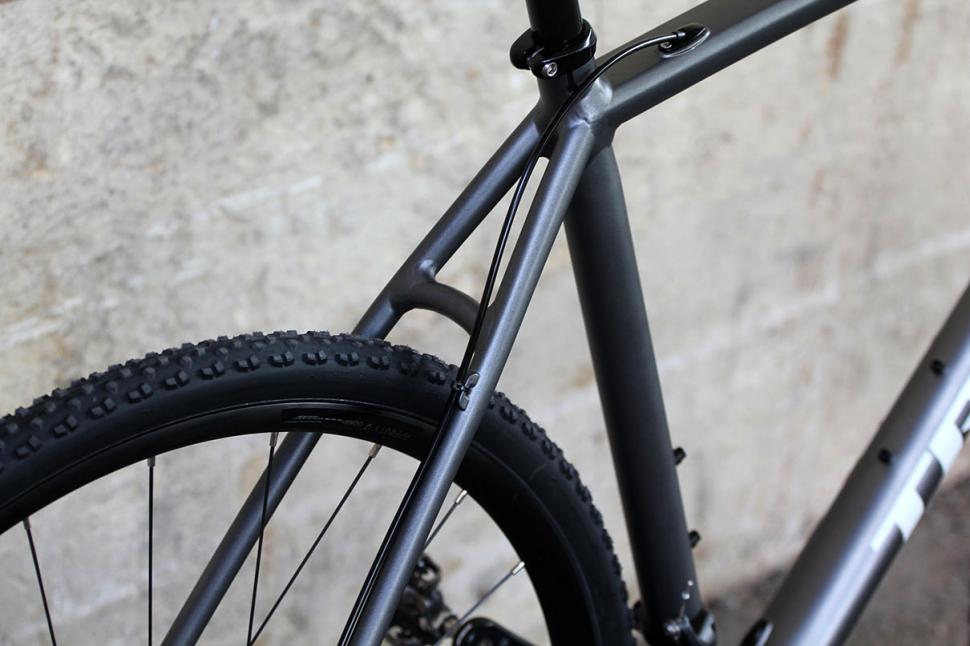

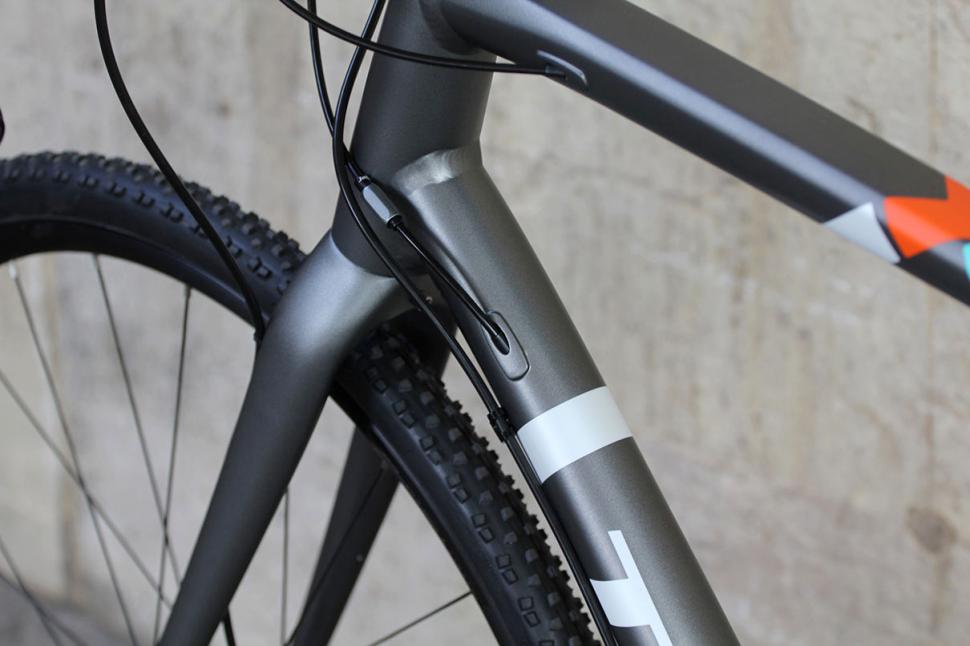

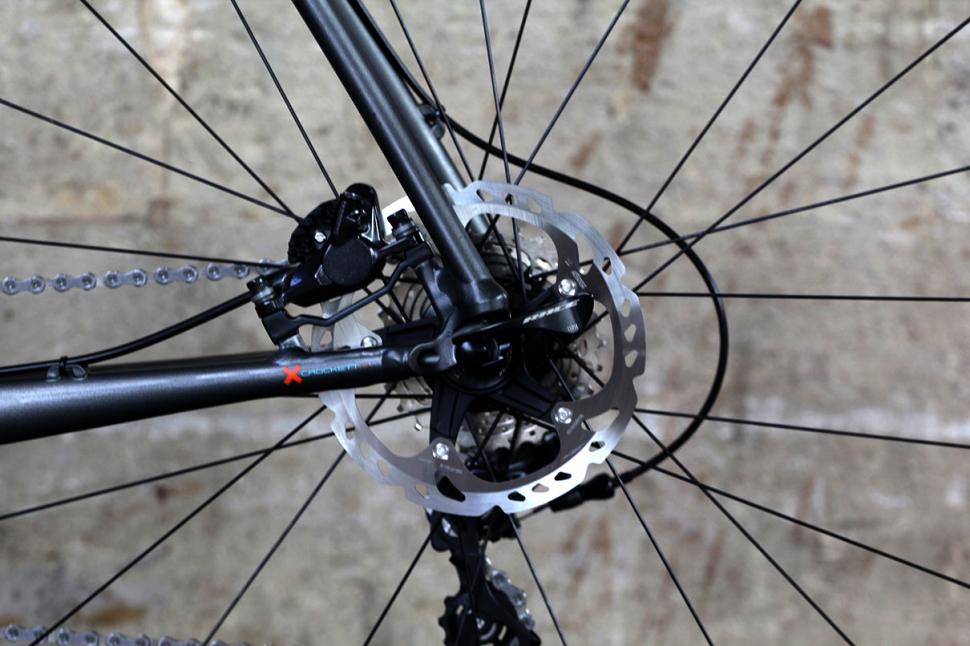


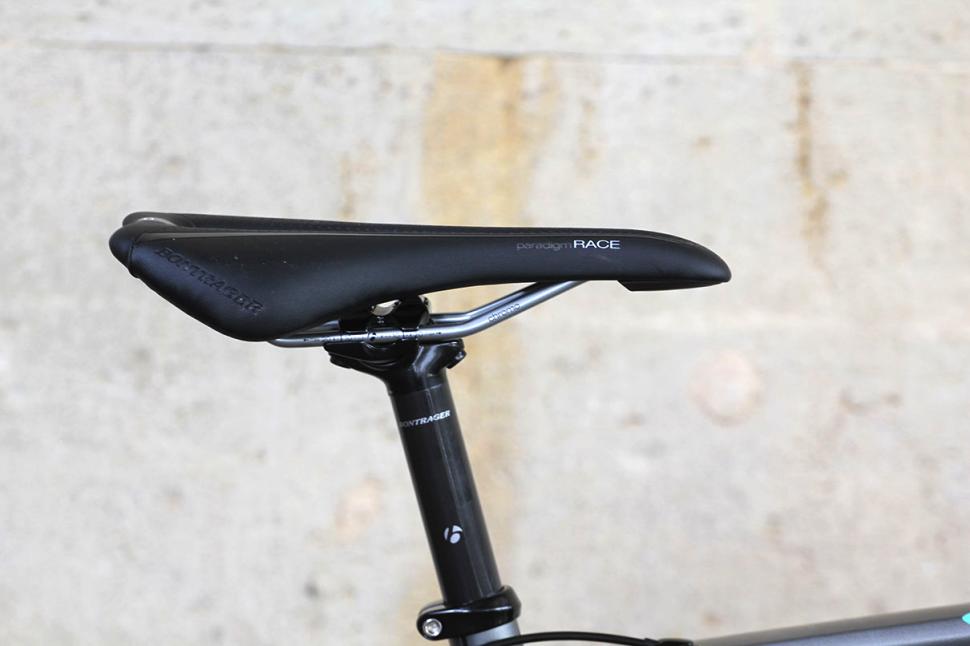
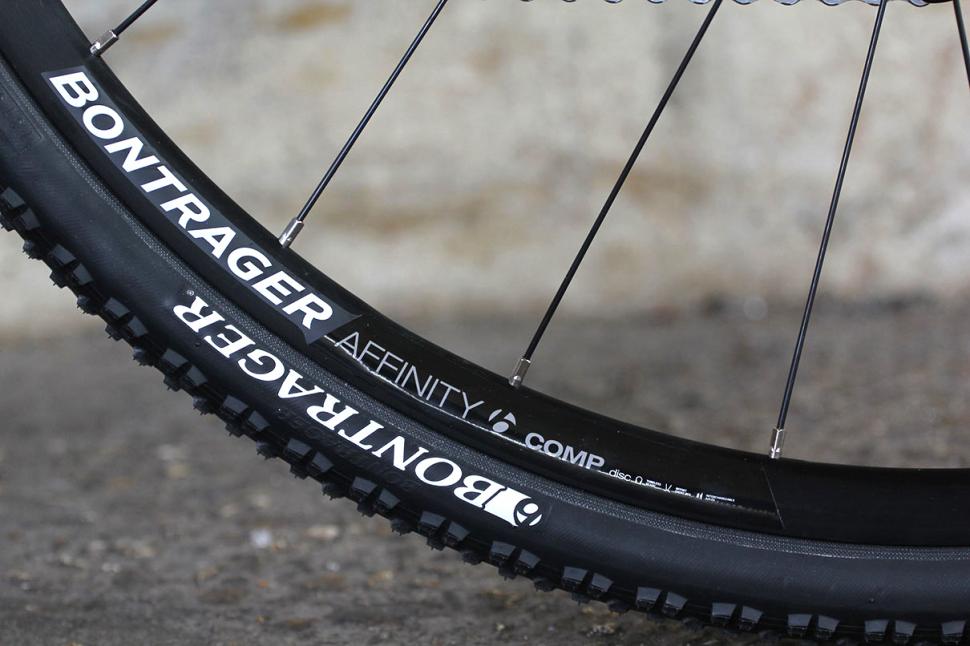
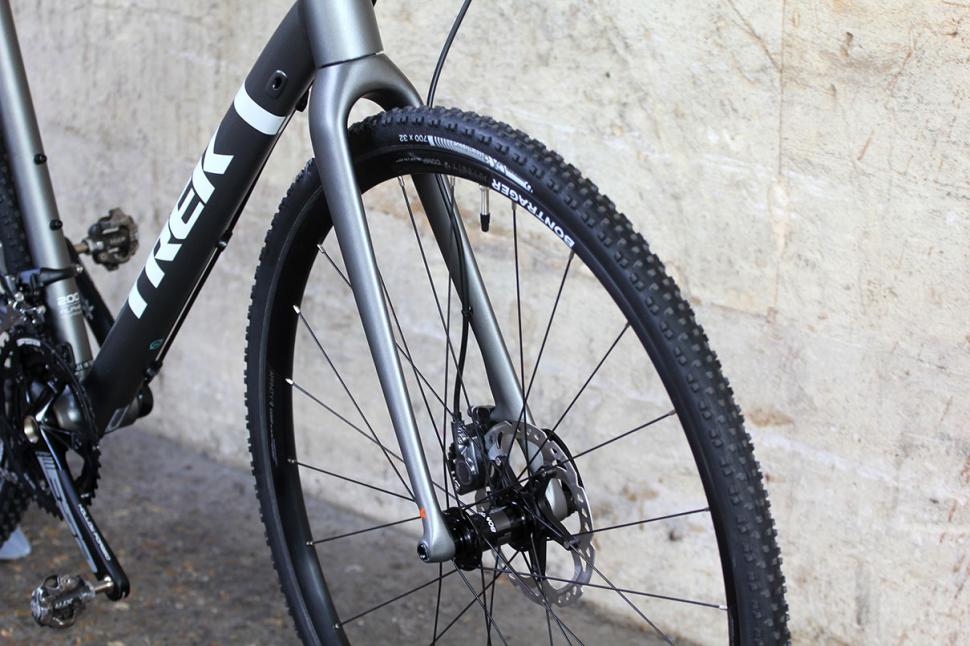
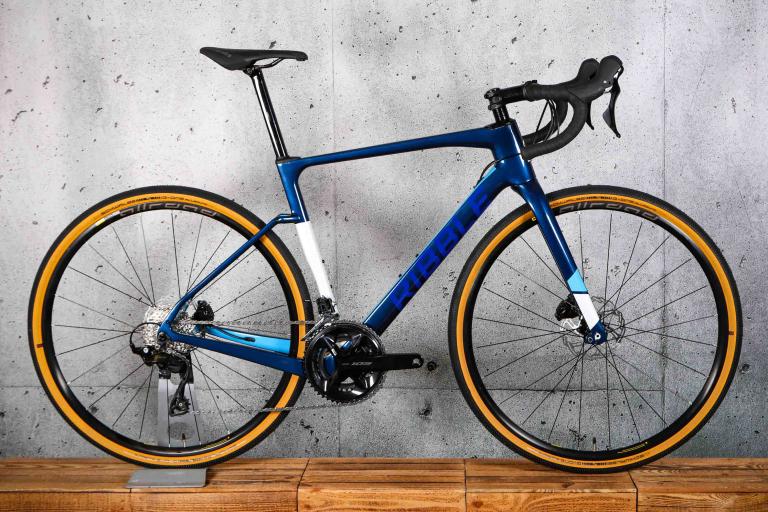
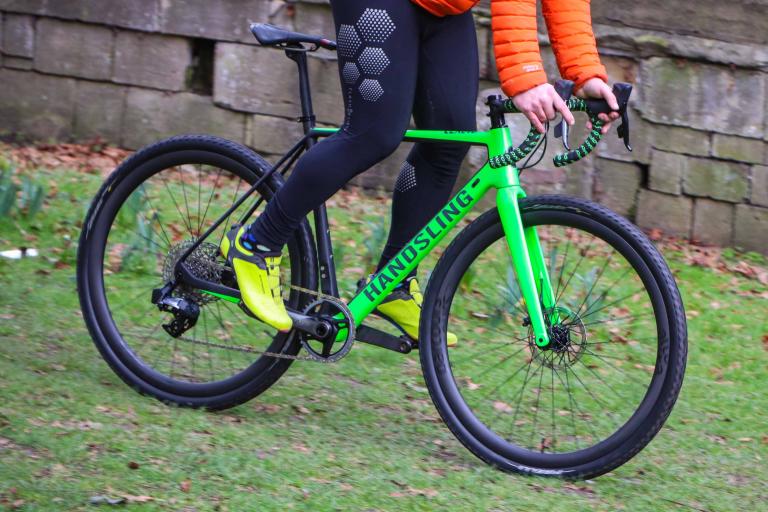

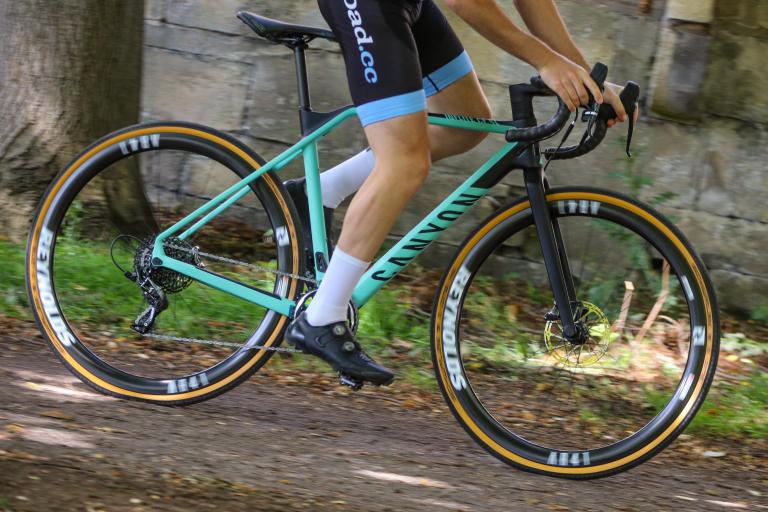
Add new comment
1 comments
The rest of the drivetrain is handled by Ultegra, save 105 substitutions for the chain and cassette, and an FSA Energy chainset with CX-specific 46/36t rings -
so basically the front and rear derailleurs are the only Ultegra on the 'drivetrain'??
so it's not 'Ultegra'...for the rest of the drivetrain then...